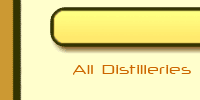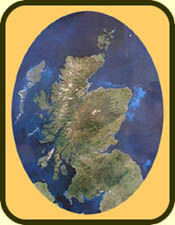Mosstowie whisky

1) Mosstowie malt whisky was produced for only seventeen years, between 1964 and 1981.
2) There has never been an official bottling of Mosstowie malt whisky - but that makes sense because the whisky was produced for blenders anyway. Bottlings of these 'lomond' malt whiskies are therefore often very rare.
3) Most independent bottlings of Mosstowie were released by Duncan Taylor, Gordon & MacPhail and Sestante.
4) More trivia about Mosstowie will be added later...
Mosstowie 30yo 1975/2005 (49.4%, Duncan Tailor Rarest of Rare, C#5815, 175 Bts.)
Nose: Coffee and a hint of smoke, then 'lighter' fragrances emerge. Tea leaves. Vaguely metallic.
The nose keeps developing; surprisingly complex. Milk powder. Keeps flaring out in other directions.
Taste: Surprisingly smooth but quite hot. Good, but doesn't quite deliver on the promise of the nose.
Score:
85 points - this one shows its age but doesn't brag about it... Highly recommendable.
Mosstowie 1979/1999 (40%, Gordon & MacPhail Connoisseur's Choice)
Nose: Wow! Very big. Rum and cognac. Sweet and something fruity. Wonderful, but a little uni-dimensional.
Taste: Powerful. Burnt toffee. Woody & sherried. Great, but (like the nose) a bit one-dimensional.
Score: 81 points - not bad at all for a 'Lomond' whisky, which are often a tad too oily for my tastes.
Mosstowie 1975/1994 (40%, Gordon & MacPhail Connoisseurs Choice, IC/FG, New Label)
Nose: It started out quite sherried, followed by organics. Apple treacle? Mighty pleasant.
Taste: Solid for quite a while, but then the finish grows too woody, winey and thin. So, finish this quickly!
Score: 83 points - but this score is only valid for the first few minutes.
Mosstowie 12yo 1970 (40%, Gordon & MacPhail , Australia, Bottled early 1980's)
Nose: Smooth & elegant. Soft fruits. Shoe polish. Malty. Lemon drops off. Soap? Pine? Pepper & spices.
Taste: Sweetish start. Smooth. Pine? Toffee. Chocolate bitterness. Dry. Sherried finish - doesn't last long.
Score: 78 points - a very old sample that fellow maniac Craig Daniels sent to me...
And there's more to tell about Mosstowie...
These were not all (official & independent) bottlings of Mosstowie Scotch whisky I've tried over the years.
Besides, these tasting notes only reflect my own, personal opinion; your tastes might be different from mine.
Fortunately, you can find the scores and tasting notes from up to two dozen other whisky lovers in the 'Malt Maniacs
Monitor' - an independent whisky database with details on more than 15,000 different whiskies from Scotland and the rest of the world. Visit the Mosstowie page on the MMMonitor and select 'scorecard view' if you want to know
how other whisky lovers felt about the dozens of Mosstowie expressions that were released in recent years. However, if you'd like to learn more about whisky in general (and single malt Scotch whisky
in particular), you might want to check out the Beginner's Guide to Scotch whisky (10 chapters filled with everything you need to fully enjoy and
appreciate a glass of single malt whisky) or the mAlmanac (sort of a rudimentary whisky shopping guide.)
Mosstowie Scotch Whisky
Mosstowie (Pronounced: just like it's written)
Speyside (Lossie)
57°37'25.28"N, 3°22'7.45"W
Glen Moray, Linkwood, Mannochmore, Benriach
1964
Closed in 1981 (the Lomond stills were removed)
Black Burn
Lomond Stills
Unknown
Hiram Walker (until 1981)
Elgin, Morayshire IV30 3TQ, Scotland, UK
-
No
No
No
Below, on WhiskyFun and on the Malt Maniacs Monitor
Name:
Region:
GPS location:
Neighbours:
Founded:
Status:
Water source:
Equipment:
Production capacity:
Ownership:
Address:
Telephone number:
Visitor centre:
Website:
Official bottlings:
Scores & tasting notes:

The building depicted at the right isn't the Mosstowie distillery,
since that never existed, at least not as a separate set of buildings.
Mosstowie was the name of the whisky that was
distilled in two
'Lomond Stills' at the Miltonduff distillery between 1964 and 1981.
Chapter 4 of the Beginner's Guide provides some backgrounds on
the difference between the traditional 'swan neck' stills and the
'Lomond'
variety that was introduced at a number of Hiram Walker
distilleries in the early 1960's. The last innovation in this area (the
continuous still invented by Aeneas Coffey) was one century old
when Alistair Cunningham and Arthur Warren of Hiram Walker came
up with the idea for the more modern Lomond still in 1955.


This type of still had a regular 'pot' at the bottom of the still, but the traditional
swan neck had been modified. Within the straigh pipe there were 3 adjustable
plates, called
'rectifier plates'
which could be cooled separately. By modifying
the position and temperature of the plates the reflux of the 'boiling' whisky could
be controlled. The angle of the 'lyne arm' at the top of the still could be modified
as well to influence the character of the whisky further.
That was exactly what Hiram Walker
was trying to accomplish in order to better
meet the demands of the whisky blenders. The makers of (among other brands)
Ballantine's wanted to be able to use a wider spectrum of malt whiskies without
having to build more different malt whisky distilleries. The very first Lomond still
was installed in 1956 in Hiram Walker's Dumbarton distillery (located right on the
border between the Highlands & the Lowlands).
At one time Dumbarton was Scotland's largest grain whisky distillery; it draws its water from the nearby Loch Lomond - the lake mind you, not to be confused with the Loch Lomond distillery. Within the Dumbarton complex the Inverleven malt whisky distillery operated between 1938 and 1991.

That first Lomond still was soon replaced by another still that was twice as large.
During the production process the Lomond still was used as the spirit still next to
the regular Inverleven
wash still. This spirit still was mothballed in 1985. In 1958
two Lomond Stills were installed within the Glenburgie distillery. In this case both
the wash still and the spirit still were of the 'Lomond' type. I guess this makes
the whisky that was produced there a real
100% Lomond whisky, as opposed
to the 50% Lomond whisky that was made at Inverleven / Dumbarton.
As mentioned before, the Lomond whisky that was produced at Glenburgie was
called Glencraig (sometimes Glen Craig), after production director Willie Craig.
The Lomond stills were replaced with regular pot stills in 1981.
So, why didn't the Lomond Stills become a success? Probably the most important
reason was the fact that maintenance and cleaning was
very labour intensive.
Whenever the still had been in operation for a few hours a thick layer of residue
emerged on the rectifier plates; this was very difficult to remove.

More importantly, as it turned out there simply was not enough demand...
There was more demand from blenders for Glenburgie malt whisky than for the 'Glencraig'
Lomond variety. The same was true for the 'Mosstowie' Lomond whisky that was made at Miltonduff distillery. Ironic; the whole 'raison d'etre' for building the Lomond stills in the first
place was to facilitate the blenders ;-)
So, the lomond still was invented to better suit the needs of blenders - but apparently the blenders were not that interested in this particular innovation. The disappointing demand for lomond
whiskies meant that the space and capital that were required to keep a separate production line going could usually be put to better use (i.e. more profitable
use) by installing regular equipment for the production of malt whisky (i.e. normal pot stills) instead.
What's more, the theoretical flexibility
provided by the rectifier plates proved to be mostly theoretical indeed. One would imagine that the plates would enable the stillmen to manipulate the character of the Lomond whisky, but it seems to me that the opposite was actually achieved. It could very well be my imagination, but I recall that I found oily notes (to be more specific: cod oil) in many of the 'Lomond' type malt whiskies from different distilleries.
These days, the 'Lomond' era is definitely over. Well, there actually is ONE distillery that still keeps the Lomond still legacy alive, and that is - fittingly - Loch Lomond distillery
itself. Apart from two regular pot stills they have no less than four other stills in operation with so-called 'rectifying heads'. By combining the whiskies that are produced by these six stills in different ways, Loch Lomond is able to produce eight different whiskies they say - all of them fairly mediocre if you ask me. When the Scotch Whisky Association wanted to introduce a bunch of new whisky categories around the year 2007 Loch Lomond asked for a special category to classify its whisky - and if ANY 'malt' whisky distillery had solid grounds for such a request it's Loch Lomond. However, the request was denied.
Interestingly enough, Loch Lomond is not a member of the Scotch Whisky Association. That's further proof that the generically named SWA is in fact mostly a lobby organisation for the big whisky corporations (who
are all members). Recent developments suggest that the SWA lobby is very influential in the UK and European governments.



|
|
|
|
|
DD Overview |
|
|
|






